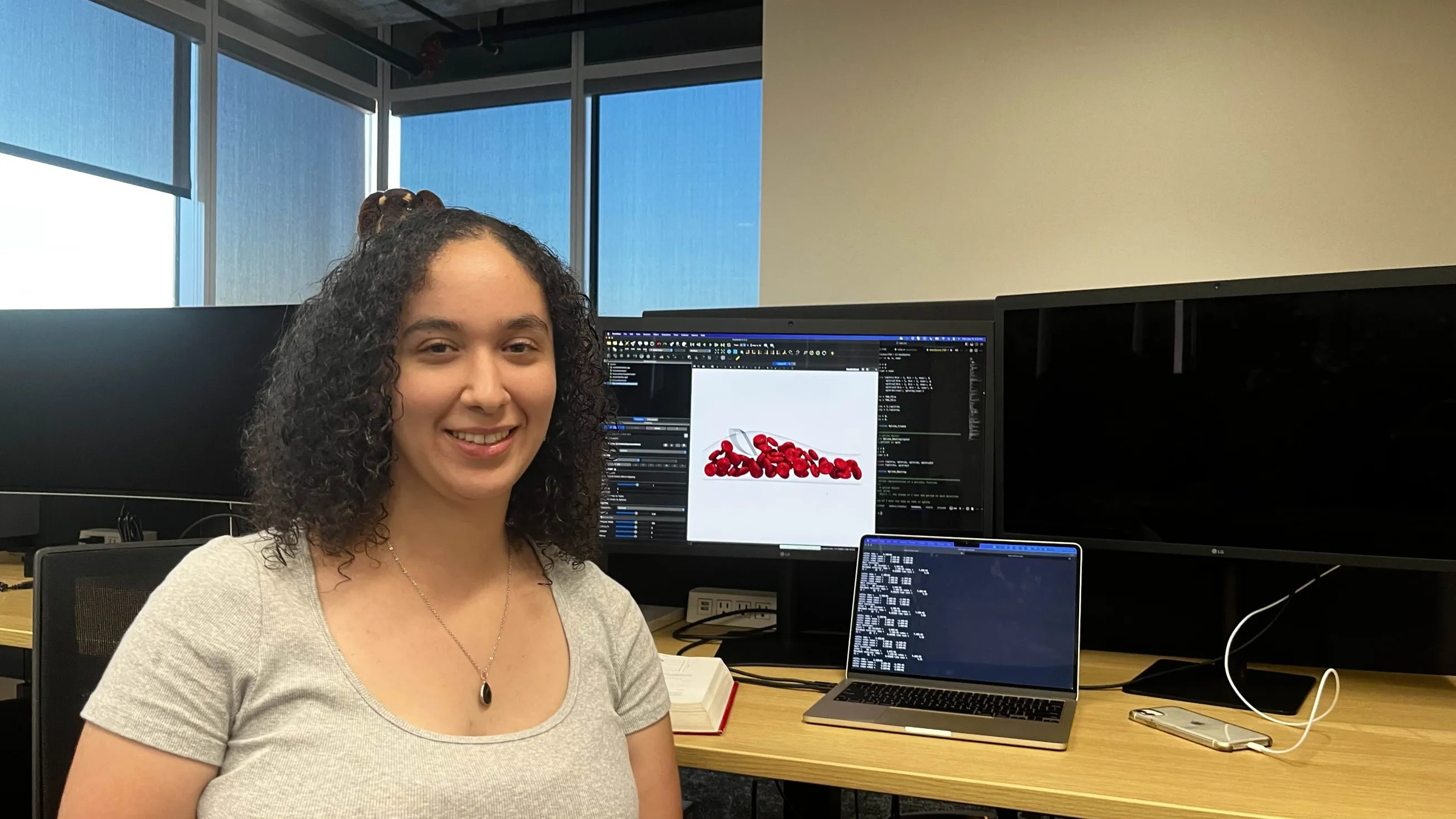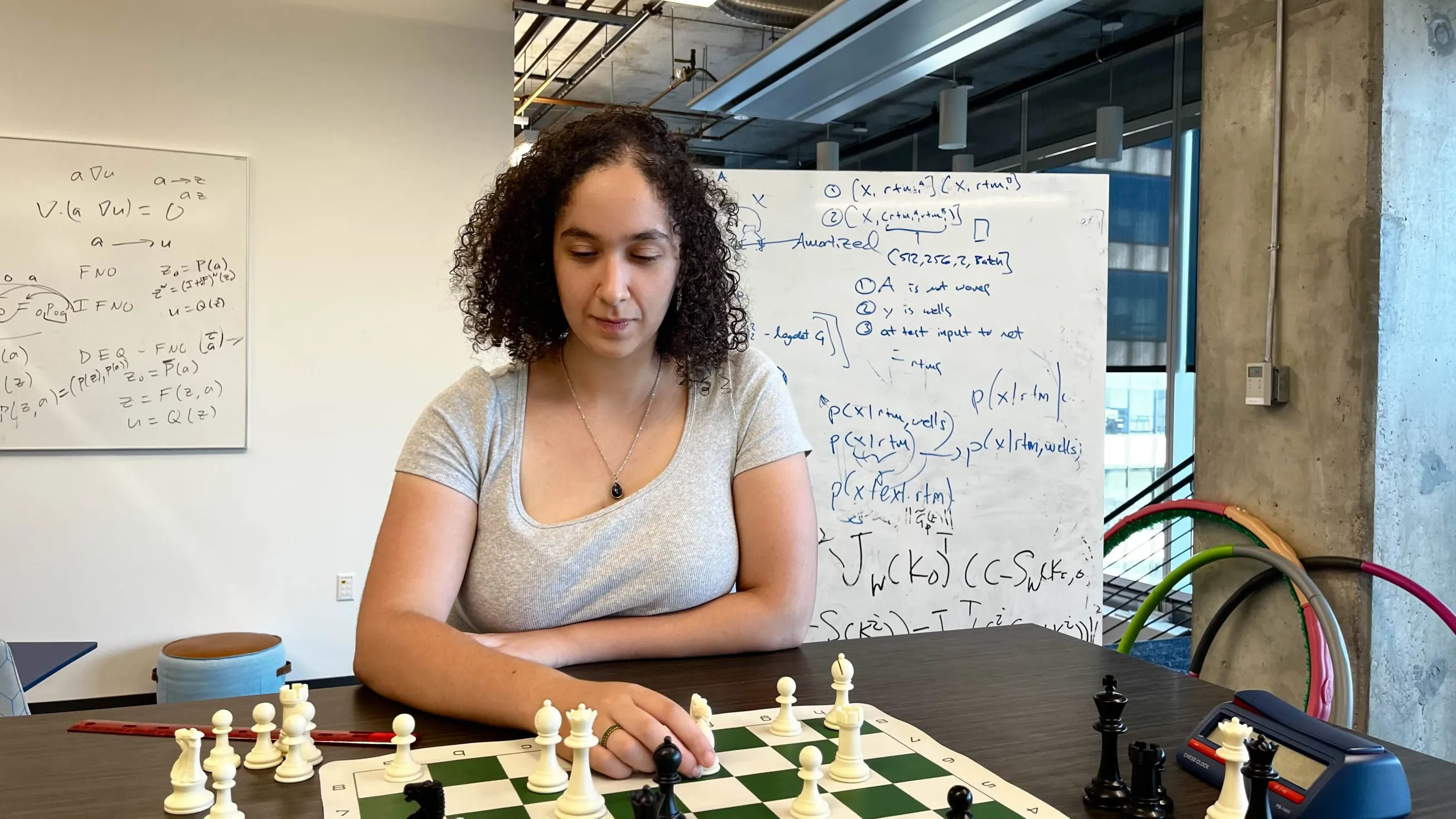Suzan Manasreh is a 4th-year Computer Science major studying large-scale computer simulation with Dr. Spencer Bryngelson.

How long have you been an undergraduate researcher at Georgia Tech?
I got involved with undergraduate research through the Georgia Tech Vertically Integrated Projects (VIP) program in 2023, and then I continued with undergraduate research into 2024 through a Computer Science and Engineering (CSE) lab, so it’s been approximately two years.
How did you get involved with undergraduate research?
In Fall 2022, I took Computer Organization & Programming and discovered I liked low-level C/C++ programming. From there, I wanted to see where I could apply these skills, and the Rogues Gallery VIP looked like a good fit because I could work on computing applications like machine learning and neural networks with new and upcoming computer hardware. There, I worked on projects specifically on spiking neural networks and real-time object detection with the Jetson platform.
In Fall 2023, I attended the UROC (Undergraduate Research Opportunities in Computing) fair and met the PI for a CSE research group that worked on creating large-scale physics simulations. I was able to join after meeting someone that helped me get started setting up my HPC computing environment and was willing to take me on as a fellow undergraduate researcher.

What are you working on?
Last summer, I mainly worked on maintaining a large Computational Fluid Dynamics (CFD) simulator and helping it support new types of biophysics simulations. The simulator was called RBC3D, and we used it to simulate blood cells flowing through vessel walls. This project required significant amounts of interdisciplinary knowledge across math, physics, computing, graphics, and even anatomy.
To illustrate, all the simulation objects were geometrically defined, so many parts of the algorithm were similar to computer graphics applications. Interactions between particles in the simulation used n-body methods from computational chemistry, requiring me to understand and validate all of this. I also had to have a good knowledge of high-performance computing topics because these simulations sometimes required 100’s of CPU cores all communicating and sending data to each other to run.
In the end, I created a simulation of red blood cells flowing through a microaneurysm because I could pull meaningful data from this simulation such as wall shear stress on the blood vessel walls to help predict rupture rates and other similar measures. Whilst the project isn’t completely finished, I got to submit the simulation graphics I helped visualize and ray-trace with Paraview and OSPray to SC24’s Art of HPC contest, and my submission got accepted to be displayed this November!

What is your favorite thing about research/researching?
I really like it when my code works! I frequently have to not only read papers and documentation on topics that are difficult to grasp, but I also have to implement methods from them. This code then gets compiled and used to generate simulation data. When the compiler passes, and I get to see the results of something I implemented working correctly, it feels great!
What are your future plans and how has research influenced them?
I recently completed my research assistantship with the CSE lab that I worked in previously, so I’m currently looking for new opportunities, ideally in areas I’ve worked in before like scientific computing and machine learning. I plan to complete the MS partition of BS/MS in CS program at Georgia Tech with the project option, so I not only get to take classes but get to complete another research project here.
